Conceptual Design of the Combinable Legged Robot Bio-Inspired by Ants’ Structure
Abstract
1. Introduction
2. Robot Design
2.1. Body Design
2.2. Leg Design
2.3. Coupling Mechanisms’ Design
3. Control System
4. Methods and Algorithm for the Experiment
4.1. Walking Motion of a Single Robot
| Algorithm 1: Pseudo-code of the robot’s walking sequence. | |
| 1: | leg1_joint2 and leg1_joint3 → maximum_angle |
| 2: | leg1_joint1 → forward_angle |
| 3: | For (i=1;3;++) |
| legi_joint2 and legi_joint3 → initial_angle | |
| Legi+1_joint2 and leg2_joint3 → maximum_angle | |
| legi_joint1 → initial_angle | |
| legi+1_joint1 → forward_angle | |
| 4: | leg4_joint2 and leg4_joint3 → initial_angle |
| 5: | leg4_joint1 → initial_angle |
4.2. Walking Motion of Connected Robots
5. Results
5.1. Walking Motion for a Single Robot
5.2. Walking Motion for Connected Robots
6. Discussion
7. Conclusions
Supplementary Materials
Author Contributions
Funding
Acknowledgments
Conflicts of Interest
Abbreviations
| PC | Personal computer |
| DoF | Degree of freedom |
| ROS | Robot Operating System |
| CPU | Central processing unit |
| IMU | Inertial measurement unit |
| r | Roll |
| p | Pitch |
| y | Yaw |
| t | Time in seconds |
| L | Leg |
| R | Robot |
References
- Dupeyroux, J.; Julien, R.S.; Stéphane, V. AntBot: A six-legged walking robot able to home like desert ants in outdoor environments. Sci. Robot. 2019, 4, 1–12. [Google Scholar] [CrossRef] [PubMed]
- Korein, M.; Veloso, M. Multi-armed bandit algorithms for spare time planning of a mobile service robot. In Proceedings of the AAMAS, Stockholm, Sweden, 10–15 July 2018; pp. 2195–2197. [Google Scholar]
- Simoens, P.; Dragone, M.; Saffiotti, A. The internet of robotic things: A review of the concept, added value and applications. In Proceedings of the Future Technologies Conference (FTC), Vancouver, BC, Canada, 15–16 November 2018; pp. 1037–1058. [Google Scholar]
- Bellicoso, C.D.; Bjelonic, M.; Wellhausen, L.; Holtmann, K.; Günther, F.; Tranzatto, M.; Fankhauser, P.; Hutter, M. Advances in real-world applications for legged robots. J. Field Robot. 2018, 35, 1311–1326. [Google Scholar] [CrossRef]
- Gao, Z.; Shi, Q.; Fukuda, T.; Li, C.; Huang, Q. An overview of biomimetic robots with animal behaviors. Neurocomputing 2019, 332, 339–350. [Google Scholar] [CrossRef]
- Andrada, E.; Mampel, J.; Schmidt, A.; Fischer, M.S.; Karguth, A.; Witte, H. From biomechanics of rats’ inclined locomotion to a climbing robot. Int. J. Des. Nat. Ecodyn. 2013, 8, 191–212. [Google Scholar] [CrossRef]
- Li, F.; Liu, W.; Fu, X.; Bonsignori, G.; Scarfogliero, U.; Stefanini, C.; Dario, P. Jumping like an insect: Design and dynamic optimization of a jumping mini robot based on bio-mimetic inspiration. Mechatronics 2012, 22, 167–176. [Google Scholar] [CrossRef]
- Song, M.; Ding, C.; Yu, C. Workspace analyzing for hybrid serial-parallel mechanisms of a new bionic quadruped robot. Appl. Mech. Mater. 2015, 713, 837–840. [Google Scholar] [CrossRef]
- Liljeback, P.; Stavdahl, O.; Beitnes, A. SnakeFighter—Development of a Water Hydraulic Fire Fighting Snake Robot. In Proceedings of the 9th International Conference on Control, Automation, Robotics and Vision (ICARCV), Singapore, 5–8 December 2006; pp. 1–6. [Google Scholar]
- Ahmad, G.; Mahdieh, B.; Ako, V. Design, Mechanical Simulation and Implementation of a New Six Legged Robot. arXiv 2020, arXiv:1902.03547. [Google Scholar]
- Jessen, K.; Maschwitz, U. Orientation and recruitment behavior in the ponerine ant Pachycondyla tesserinoda (Emery): Laying of individual-specific trails during tandem running. Behav. Ecol. Sociobiol. 1986, 19, 151–155. [Google Scholar]
- Groham, J.M.; Kao, A.B.; Wilhelm, D.A.; Garnier, S. Optimal construction of army ant living bridges. J. Theor. Biol. 2017, 435, 184–198. [Google Scholar] [CrossRef] [PubMed]
- Shriyam, S.; Mishra, A.; Nayak, D.; Thakur, A. Design, fabrication and gait planning of alligator-inspired robot. Int. J. Curr. Eng. Technol. 2014, 2, 567–575. [Google Scholar] [CrossRef]
- McCreery, H.F.; Breed, M.D. Cooperative transport in ants: A review of proximate mechanisms. Insect. Soc. 2006, 61, 99–110. [Google Scholar] [CrossRef]
- Madhav, P.; Tamer, A.; Tarek, S. Hardware architecture review of swarm robotic system: Self-reconfiguration, self-reassembly, and self-replication. ISRN Robot. 2013, 2013, 1–11. [Google Scholar]
- Lee, J.G. Design of Mutually Combinable Modular Legged Robot. Master’s Thesis, Kyungpook National University, Daegu, Korea, 2019. [Google Scholar]
- Ha, J.; Lee, J.G.; Yeoh, C.E.; Lee, S.; Yi, H. Optimal design of a quadruped walking robot’s leg. In Proceedings of the International Conference on Control, Automation System (ICCAS 2018), Pyeong Chang, Korea, 17–20 October 2018; pp. 1723–1725. [Google Scholar]
- Yeoh, C.E.; Kim, T.H.; Lee, S.R.; Yi, H. The Combination Funtion for Multi-leg Modular Robot, Bio-mimicked from Ant’s Behavior. In Proceedings of the International Conference on Intelligent Robots and Systems (IROS), Macau, China, 4–8 November 2019; p. 2657. [Google Scholar]
- Shamble, P.S.; Hoy, R.R.; Cohen, I.; Beatus, T. Walking like an ant: A quantitative and experimental approach to understanding locomotor mimicry in the jumping spider Myrmarachne formicaria. Proc. R. Soc. B 2017, 284, 1–10. [Google Scholar] [CrossRef] [PubMed]
- Zollikofer, C.P.E. Stepping patterns in ants. II. Influence of body morphology. J. Exp. Biol. 1994, 192, 107–118. [Google Scholar] [PubMed]
- Böttcher, S. Principles of Robot Locomotion. 2006. Available online: http://users.dimi.uniud.it/~antonio.dangelo/Robotica/2012/helper/leggedRobot/RobotLocomotion.pdf (accessed on 3 February 2021).

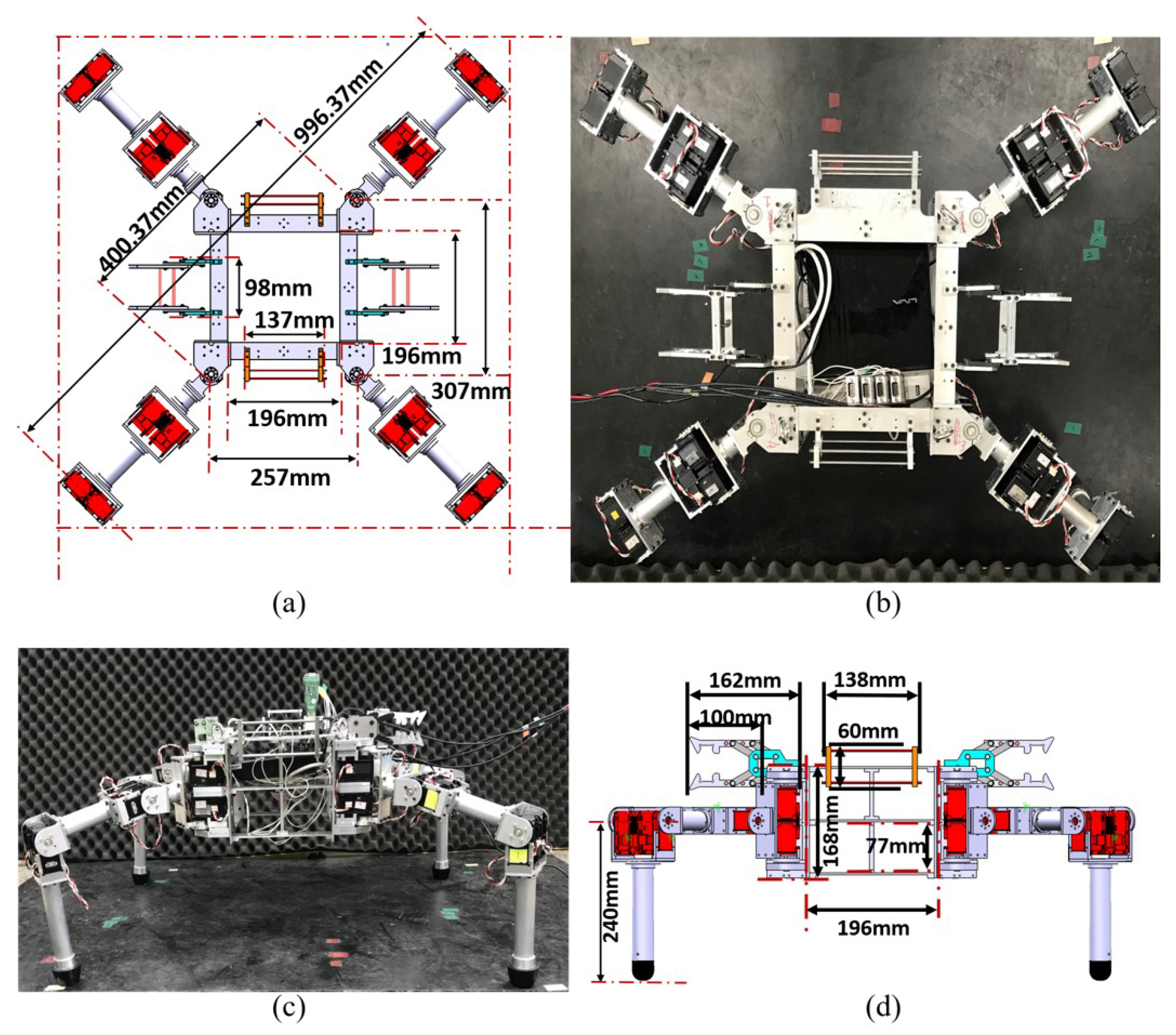
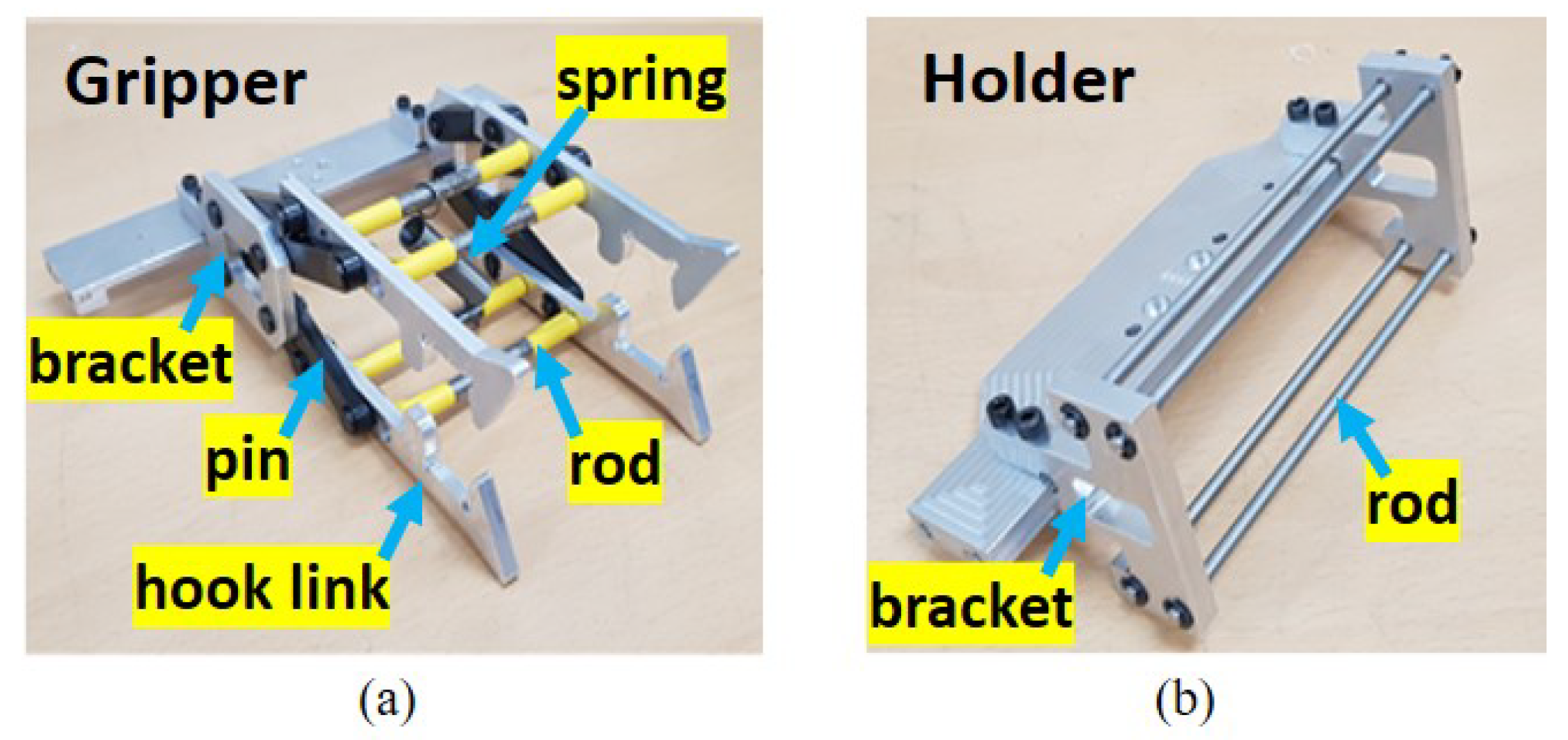
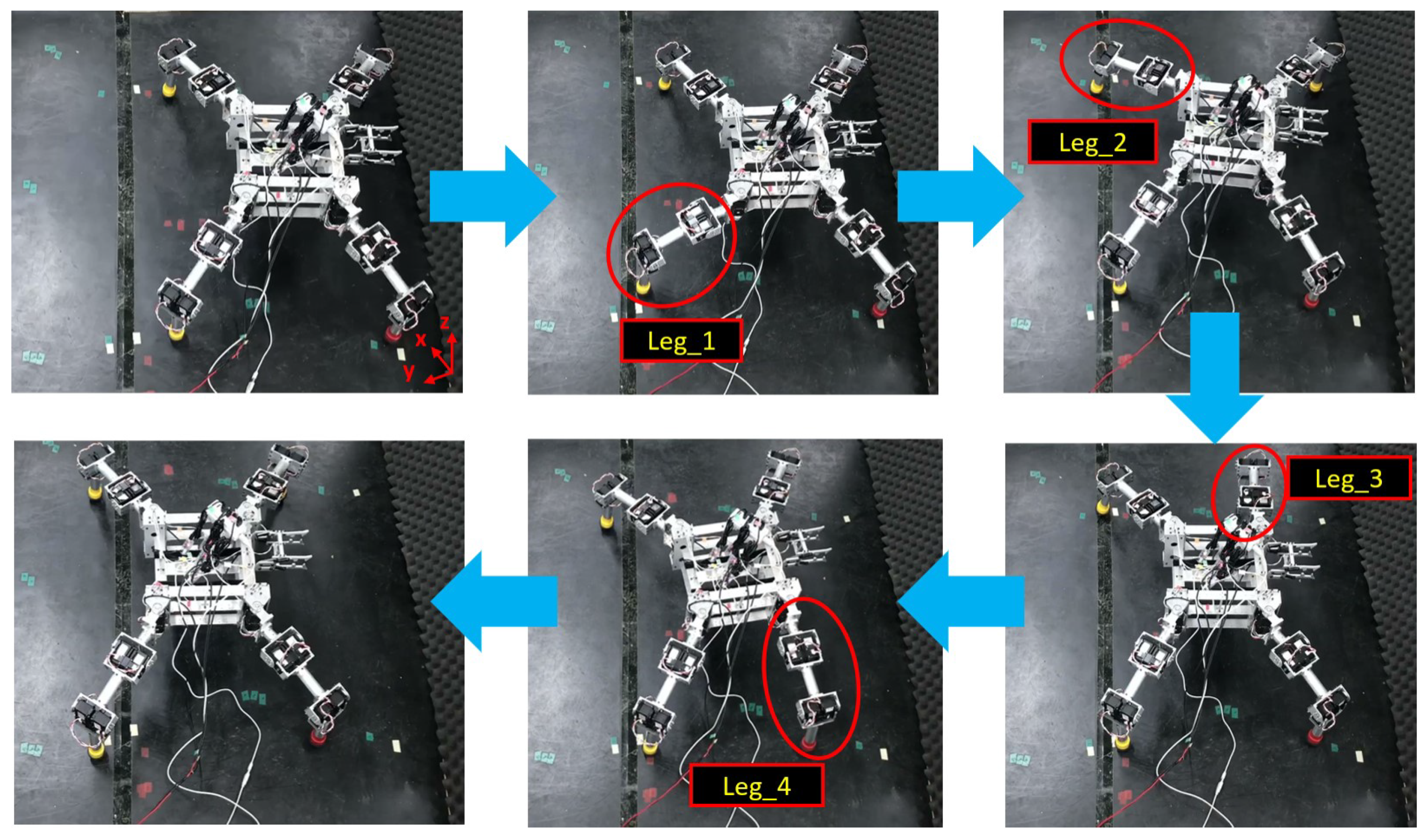
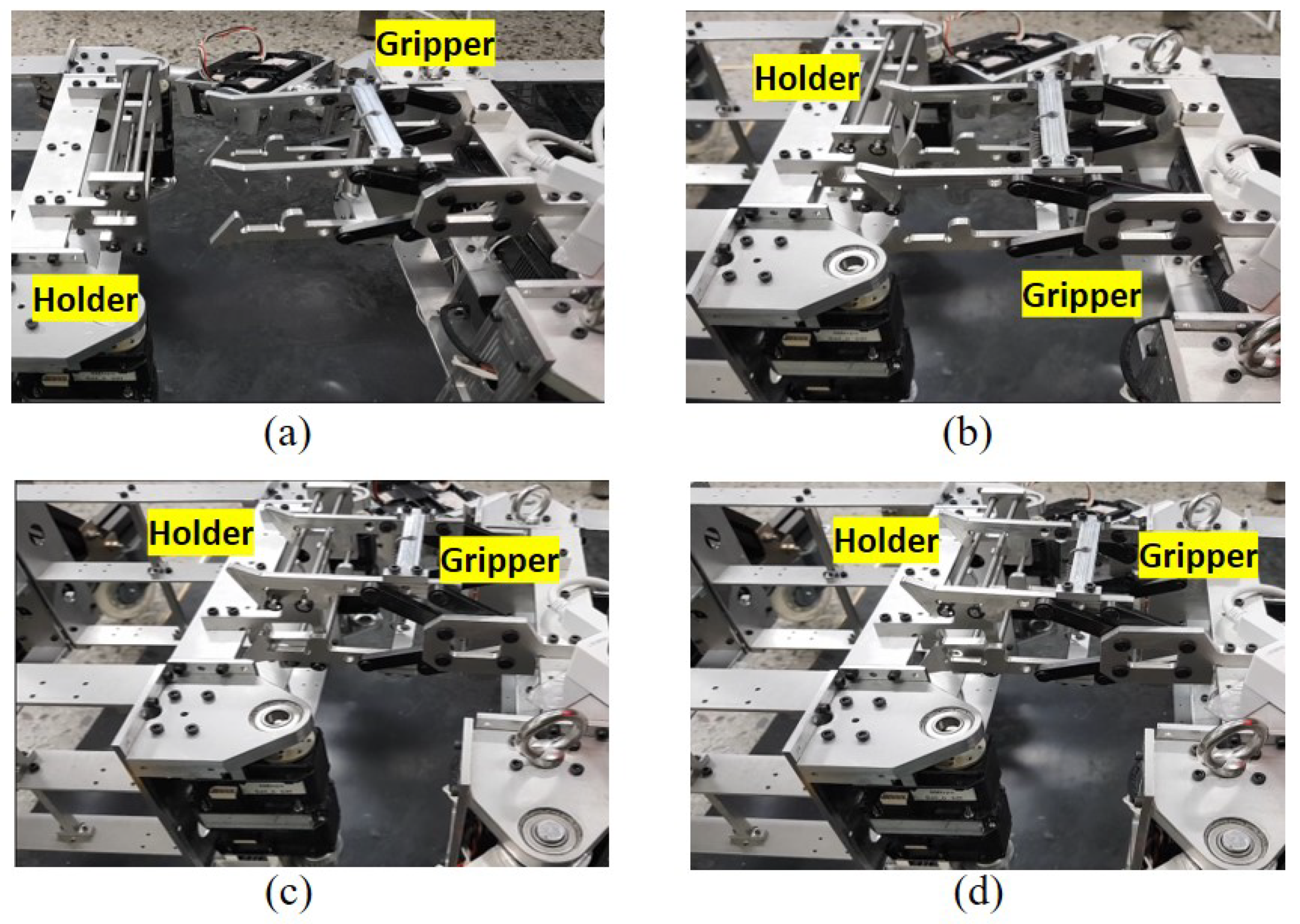


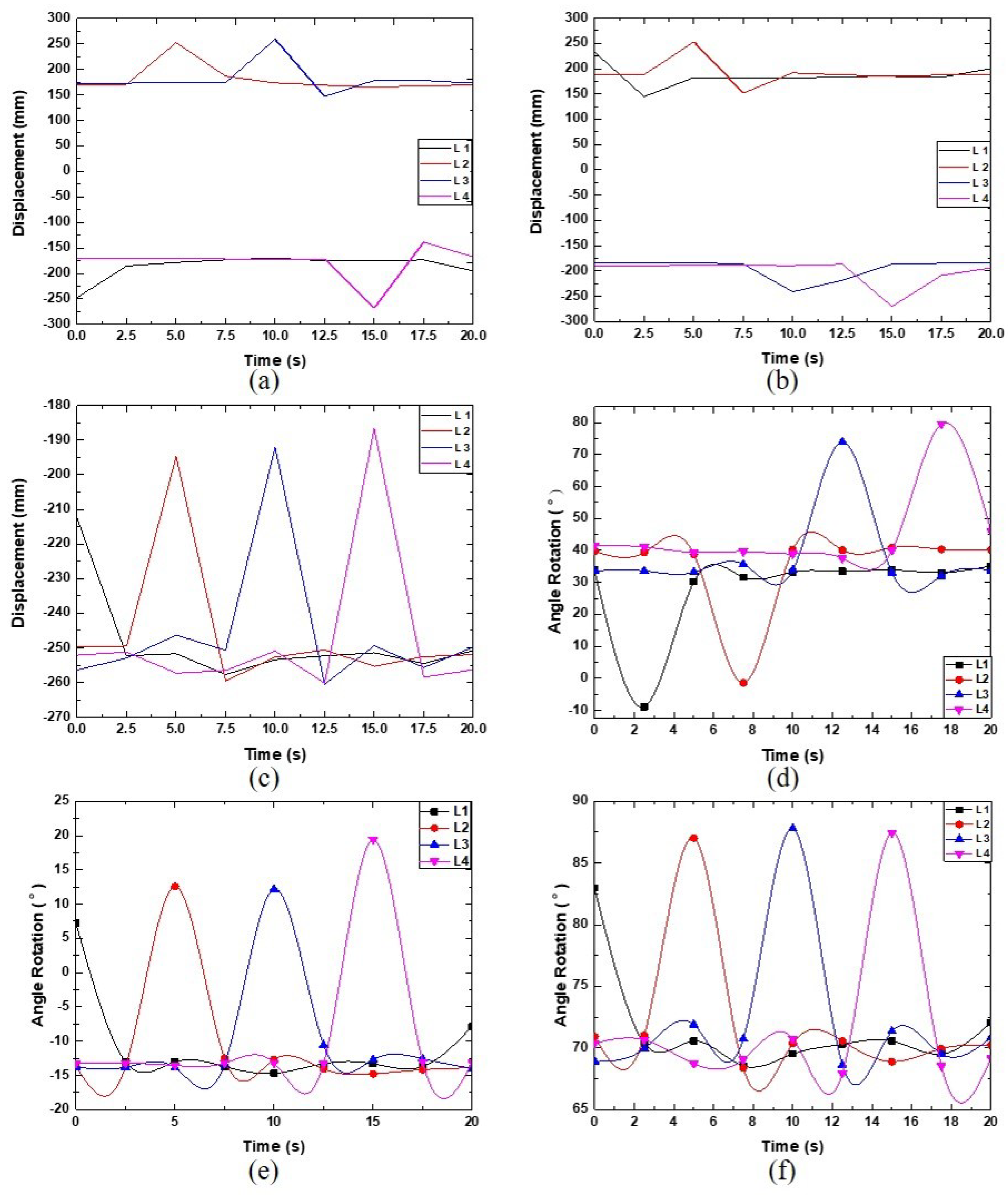
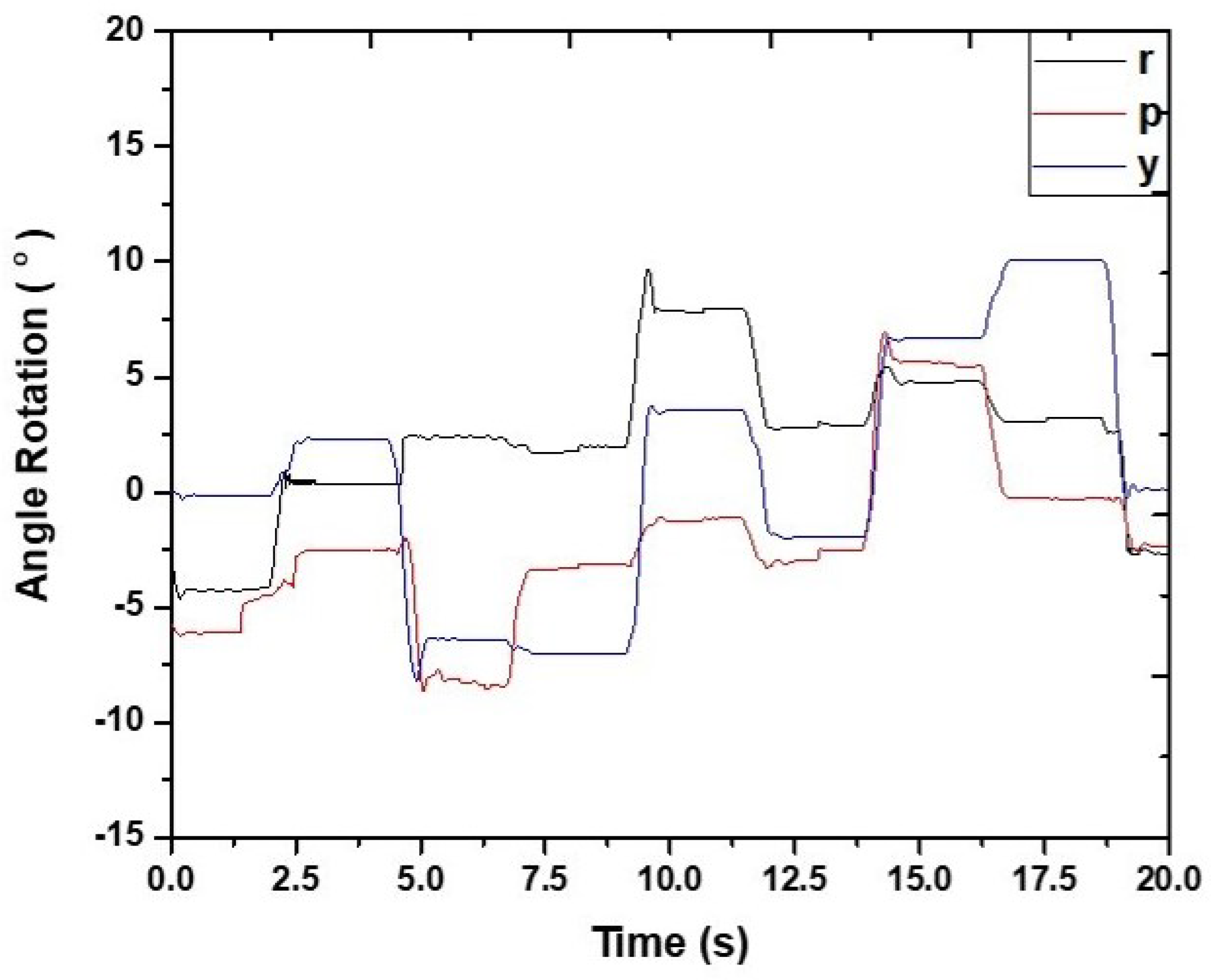


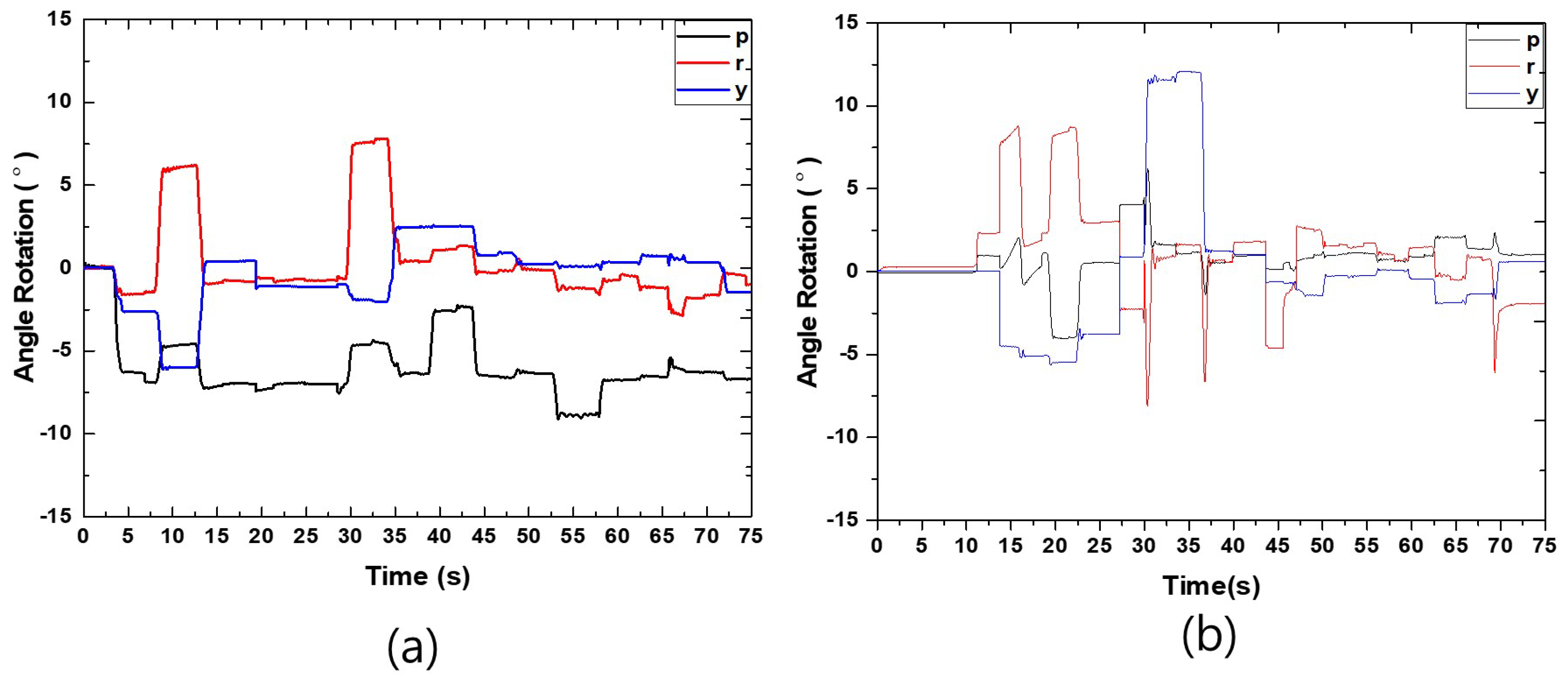
| Robot 1 | Robot 2 | |
|---|---|---|
| pitch, p | −9.121∼0.294 | −4.010∼6.215 |
| roll, r | −2.894∼7.825 | −8.122∼8.774 |
| yaw, y | −6.118∼2.606 | −5.657∼12.069 |
Publisher’s Note: MDPI stays neutral with regard to jurisdictional claims in published maps and institutional affiliations. |
© 2021 by the authors. Licensee MDPI, Basel, Switzerland. This article is an open access article distributed under the terms and conditions of the Creative Commons Attribution (CC BY) license (http://creativecommons.org/licenses/by/4.0/).
Share and Cite
Yeoh, C.E.; Yi, H. Conceptual Design of the Combinable Legged Robot Bio-Inspired by Ants’ Structure. Appl. Sci. 2021, 11, 1379. https://doi.org/10.3390/app11041379
Yeoh CE, Yi H. Conceptual Design of the Combinable Legged Robot Bio-Inspired by Ants’ Structure. Applied Sciences. 2021; 11(4):1379. https://doi.org/10.3390/app11041379
Chicago/Turabian StyleYeoh, Chin Ean, and Hak Yi. 2021. "Conceptual Design of the Combinable Legged Robot Bio-Inspired by Ants’ Structure" Applied Sciences 11, no. 4: 1379. https://doi.org/10.3390/app11041379
APA StyleYeoh, C. E., & Yi, H. (2021). Conceptual Design of the Combinable Legged Robot Bio-Inspired by Ants’ Structure. Applied Sciences, 11(4), 1379. https://doi.org/10.3390/app11041379






